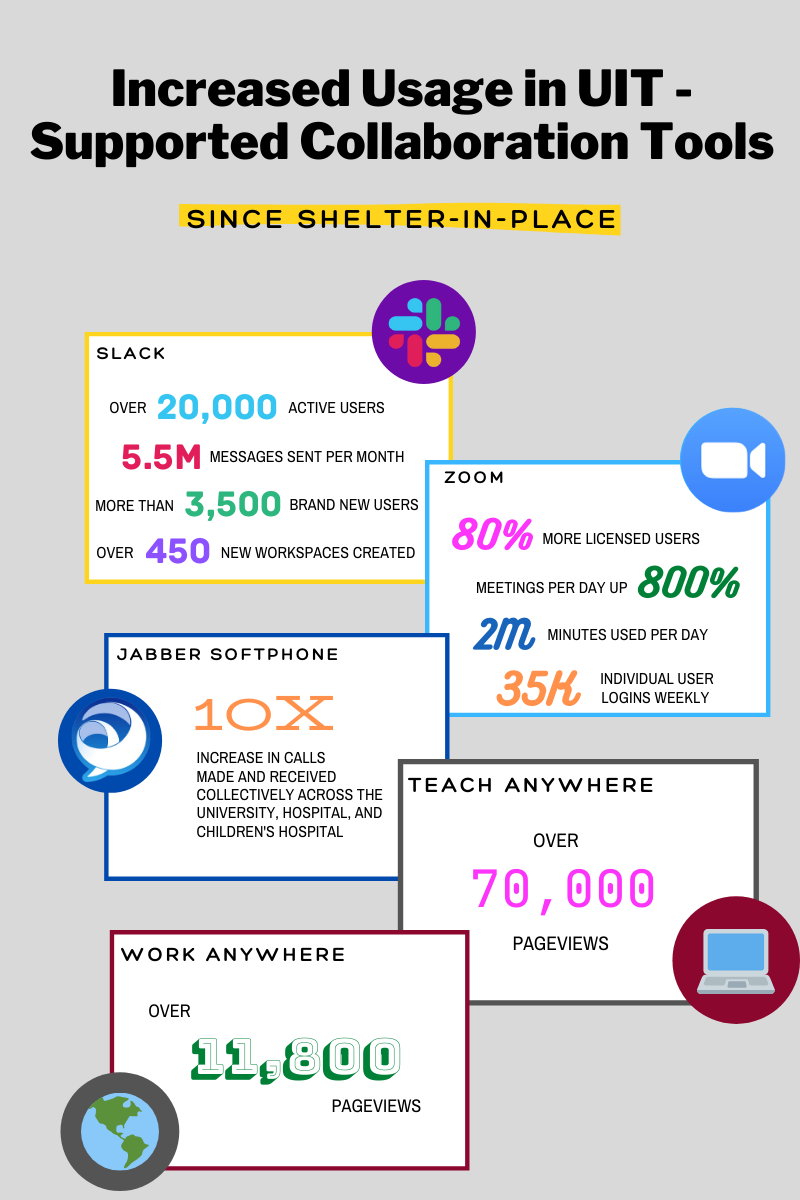Since mid-March, when California’s shelter-in-place order went into effect, we’ve adopted many new ways of working — evidenced by a dramatic surge in the usage of University IT (UIT) collaboration tools like Slack, Zoom, and Jabber.
While these tools were steadily-in-place prior to us sheltering-in-place, countless members of the Stanford community, including students, faculty, and staff entered uncharted territory by embracing remote collaboration on a daily basis. Video conferencing and instant messaging have become increasingly valuable in a time when in-person connections are out-of-reach.
“The rapid move from physical to remote locations highlights the value and need for tools that keep us connected,” said UIT’s Executive Director of Client Experience and Solutions Brad Immanuel. “Our collaboration tools offer a great combination of features, user-experience, reliability, and security. The surge in usage demonstrates Stanford’s agility and signals a change in the footprint of how we will operate for years to come.”
Highly collaborative by the numbers
To gain a sense of these increases, check out this infographic, which highlights usage statistics from UIT-supported tools: Slack, Zoom, and Jabber Softphone. Two UIT-supported websites – Teach Anywhere and Work Anywhere – also experienced significant traffic since Shelter-in-Place began.




